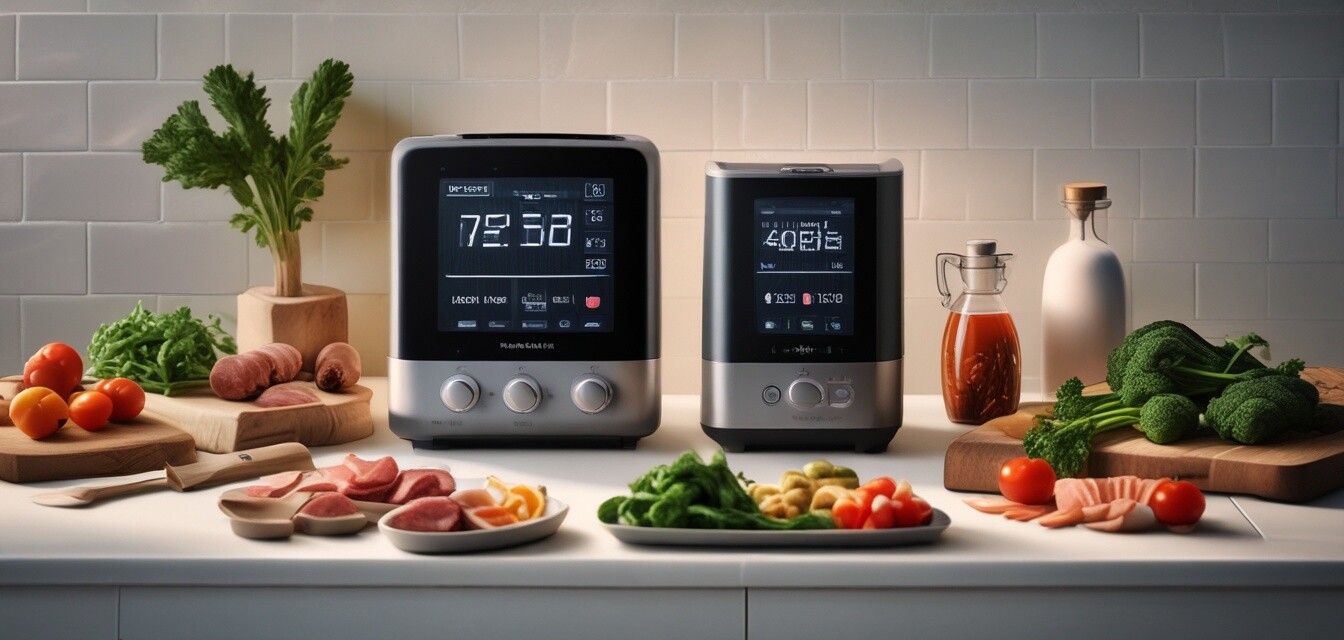
The Art of Sous Vide Cooking
Key Takeaways
- Sous vide cooking ensures precise temperature control, resulting in perfectly cooked meals.
- This method retains moisture and flavor, enhancing the overall taste.
- It offers a range of applications from meats to vegetables and even desserts.
- Getting started requires a sous vide immersion cooker and vacuum-sealed bags.
- Experimentation is key to mastering this technique, allowing for culinary creativity.
Sous vide, French for "under vacuum," is a cooking technique that has grown in popularity in recent years due to its precision and ease of use. This method allows you to cook food at a consistent temperature in a water bath, ensuring that it is evenly cooked from edge to edge. Whether you're a novice cook or a seasoned chef, understanding the art of sous vide can elevate your cooking game. Let's dive into the benefits of sous vide cooking and how to get started!
What is sous vide cooking?
Sous vide cooking involves sealing food in a bag and immersing it in a water bath at a precisely controlled temperature. This method ensures that every piece of food is cooked evenly without overcooking or drying it out.
Benefits of sous vide cooking
- Consistency: Cook food to the perfect level of doneness every time.
- Flavor retention: Foods retain their natural juices, resulting in enhanced taste.
- Tenderness: Cooking at lower temperatures can break down connective tissues in meat, resulting in more tender dishes.
- Convenience: Prepare dishes ahead of time and finish them quickly when ready to serve.
Comparison of cooking methods
| Cooking Method | Precision | Time | Flavor |
|---|---|---|---|
| Sous Vide | High | Variable (1-48 hours) | Enhanced |
| Traditional Boiling | Low | Short (10-30 minutes) | Can lose flavor |
| Grilling | Medium | Medium (15-60 minutes) | Distinct smoky flavor |
How to get started with sous vide cooking
Getting started with sous vide cooking is simpler than you might think. Here’s what you need to do:
Beginner's Guide to Sous Vide Cooking
- 1. Gather your equipment: You'll need a sous vide immersion cooker, vacuum-sealed bags or zip bags, and a container for the water bath.
- 2. Choose your food: Almost any food can be cooked sous vide, but starting with proteins like chicken, steak, or vegetables is recommended.
- 3. Set the temperature: Use a reliable sous vide cooking guide or app to determine the ideal cooking temperature and time for your dish.
- 4. Vacuum seal your food: Use a vacuum sealer or the water displacement method with zip bags to seal your food.
- 5. Cook in the water bath: Once your food is sealed, submerge it in the preheated water bath and let it cook for the recommended time.
- 6. Finish your dish: After sous vide cooking, you can sear, grill, or broil your food for added texture and flavor.
Experimenting with flavors
Sous vide cooking opens the door to experimentation with various herbs, spices, and marinades. Feel free to personalize your dishes by trying different seasonings. For more insights on culinary experimentation, you can check out our Cooking Tips & Techniques.
Common sous vide cooking mistakes to avoid
- Not sealing bags properly: Air pockets can lead to uneven cooking.
- Cooking at incorrect temperatures: Make sure to research and stick to suggested temp guidelines.
- Overcooking: While sous vide is forgiving, cooking too long can alter the texture.
Cleaning and maintenance of your sous vide equipment
To keep your cooking tools in excellent condition, follow these maintenance tips:
- Always disconnect your immersion cooker after use and allow it to cool.
- Rinse the container used for water with warm soapy water.
- Regularly check seals on your vacuum bags or replace them if damaged.
- Refer to your manufacturer's instructions for specific cleaning steps.
Pros
- Precision, ensuring the perfect doneness.
- Versatile, applicable to many types of food.
- Can be prepared in advance for convenience.
Cons
- Requires special equipment, which may be costly.
- Long cooking times compared to conventional methods.
- Learning curve for beginners to master the technique.
Conclusion
Mastering the art of sous vide cooking can not only improve your culinary performance but also provide a fun and creative outlet in the kitchen. If you’re new to cooking, be sure to explore our Cooking Buying Guides for tips on equipment and accessories that can enhance your cooking experience. Embrace this innovative technique, and you will surely take your dishes to the next level!